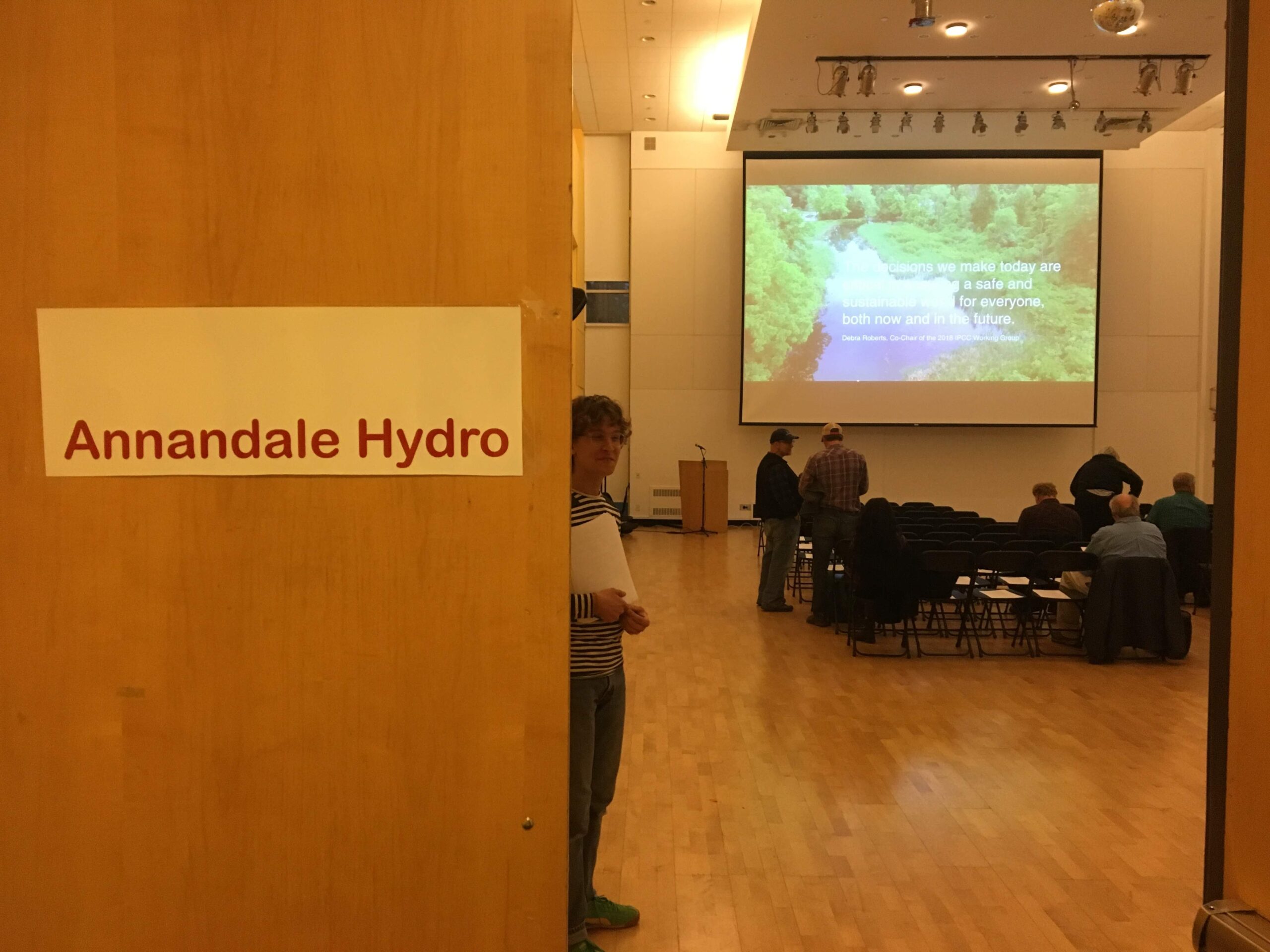Jan Borchert, Current Hydro
Applying for the Small Hydropower Exemption (2 of 4)
With the Initial Consultation Document (ICD) completed and distributed, we had 30 days to prepare our public meeting as part of our stakeholder consultation efforts. We gathered and shared a great deal of information for such a small hydro project and hope that stakeholders would appreciate the work and provide us with helpful recommendations to improve the project.
We also anticipated that many people might limit their reading to the summary, study the graphics and/or read only the sections relevant to them. This is why the goal of the public meeting was to provide stakeholders with a site visit, a project presentation and, as the kick-off for the 60-day public commenting period, a room for questions and initial comments, as well as a clear description of how to submit comments during the comment period. Every attendee received an Agenda as well as this document:
Preparing and hosting a public meeting

In addition to the (FERC-)mandatory stakeholders, we also invited people who had shown interest in the project since the start in 2016, placed road signs in the neighborhood two weeks in advance and repeatedly published an event invitation in the Poughkeepsie Journal and on Facebook.
The evening was split into two sections: the site visit and the presentation / discussion-meeting. The site visit was scheduled one hour prior to the meeting, with the primary goal to allow stakeholders to experience the site and the existing ecosystem first hand.

After that, we kicked off the meeting presentation with a welcome and introduction, followed by the project description (facilities, construction, operation and environmental considerations and protection measures). Our presentation also introduced the NYSERDA project and covered Bard’s motivation to investigate hydropower as an option for the Bard dams. With this event and the large audience of interested stakeholders in attendance, we were excited for the opportunity to start a public conversation about the future of the thousands of dams in NYS and draw attention to related issues and opportunities – this website being part of that effort.
Preparing an evening that would cover such a broad scope (technical, environmental, socio-economic and policy topics), for an unknown number of participants and their backgrounds (neighbors, experts from state and federal resource agencies, outreach staff of environmental NGOs, Bard students) was a challenge. With the help of a professional facilitator, we split the presentation in different sections, presented by different speakers representing Bard Faculty, the Bard microhydro project team and Current Hydro, the developer. Manna Jo Greene, Environmental Director for Hudson River Sloop Clearwater and Ulster County Legislator, and a Bard Micro Hydropower Project Advisor, was able to host the Q&A and discussion part of the evening.

We audio-recorded the presentation and discussion for the federal permitting process, following FERC’s consultation checklist.
Next Steps after the public meeting
Based on the information contained in the ICD, and the information provided during the public meeting and site visit, we are awaiting the solicited comments and recommendations from resource agencies and Native American Tribes and other stakeholders within the public comment period of 60 days, starting the day of the public meeting and ending on December 29, 2018.
The public meeting itself can be seen as a success, as we reached many different stakeholders and heard a variety of questions and comments that evening. The next step is to respond to the comments, recommendations, suggestions and questions we received and to create the draft exemption application document.


2 Responses
[…] the Initial Consultation Document (ICD) distributed and a successful public meeting behind us, the next phase of our stakeholder engagement is responding to the comments, questions, […]
[…] But prior to that, we needed to prepare and host the public/stakeholder meeting. […]